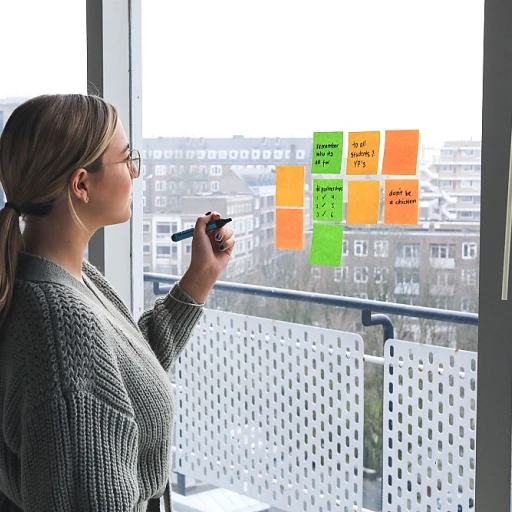Understanding Continuous Leadership Development
Continuous Learning, Continuous Growth
The concept of continuous leadership development revolves around the unending pursuit of improving leadership skills, shaping leaders who can effectively navigate the ever-evolving challenges faced by organizations. This isn't a one-time task, but a journey where learning and growth are perpetual. Whether you're in a senior leaders position or just stepping into the leadership arena, the idea remains the same: evolve through learning. Organizations that foster a culture of continuous improvement often witness significant transformation. They see their leadership programs as an engine of progress, ensuring leaders at every level are equipped with the necessary skills for success. This requires a commitment to ongoing training and development, reinforcing an organizational culture that values growth.The Impact on Organizational Success
For businesses craving long-term success, continuous learning isn't just beneficial—it's crucial. Effective leadership development programs need to align with organizational goals, fostering an environment where learning development is highly prioritized. Engaging team members in such programs not only enhances their leadership skills but also boosts overall employee engagement. Organizations that promote such learning environments typically see improved decision making, better team dynamics, and a stronger, more cohesive organizational culture. The focus, after all, is not just on leaders but on creating an atmosphere where everyone can contribute to the organizational success.Personal Insights and Experiences
During my time working with various teams, I've seen firsthand the benefits of continuous leadership development. I recall a scenario where a development plan tailored for emerging leaders resulted in impressive advancements. Employees who might have previously been unnoticed were given opportunities to shine, and leaders who benefited from feedback and growth opportunities thrived in their roles. Such experiences reinforce the idea that leadership is about continuous change and refinement. Whether through formal training or informal feedback sessions, the organizations that invest in the continuous growth of their team members see the greatest rewards. For those interested in further exploration of self-guided education for empowerment, you can explore empowering learners through self-guided education. This kind of resource can be a stepping stone towards creating resilient and adaptive leaders who are well-prepared for the challenges that lie ahead. These insights lay the foundation for effective strategies for leadership growth, which will be highlighted in more depth further along in our discussion.Key Strategies for Effective Leadership Growth
Building Leadership Skills for Long-Term Success
Developing leadership skills is not just a one-time event; it's a continuous process that involves consistent learning and improvement. Many leaders find that effective leadership growth requires a combination of formal training programs and real-world experiences. It's about blending what you learn in a classroom with the challenges you face in a business setting. This approach helps leaders adapt and grow, ensuring they meet their organizational goals.
Engaging Employees in Leadership Development
Engaging team members in leadership development is crucial for creating a thriving organizational culture. When employees are involved in leadership programs, they feel more connected to the organization's mission and are more likely to contribute to its success. This engagement can lead to higher employee satisfaction and retention, which are vital for any business aiming for long-term success.
Effective Decision Making Through Continuous Learning
Continuous learning plays a significant role in honing decision-making skills. Leaders who prioritize learning are better equipped to make informed decisions that benefit their team and organization. By participating in development programs, leaders can gain new perspectives and insights, which can be invaluable when faced with complex decisions.
Implementing Best Practices for Leadership Growth
Organizations that implement best practices in leadership development often see better results. This includes setting clear goals for leadership improvement, providing regular feedback, and offering opportunities for cross-functional collaboration. These practices not only enhance leadership skills but also foster a culture of continuous improvement and organizational success.
Overcoming Challenges in Leadership Development
While leadership development can be rewarding, it also comes with its challenges. Leaders must be willing to step out of their comfort zones and embrace new learning opportunities. Organizations can support their leaders by providing resources and a supportive environment that encourages growth. By addressing these challenges head-on, leaders can achieve personal and professional success.
For more insights on empowering learners through self-guided education, check out this resource.
The Role of Feedback in Leadership Improvement
Feedback as a Catalyst for Growth
Feedback is a powerful tool in the development of leadership skills. It acts as a mirror, reflecting both strengths and areas for improvement. For leaders, understanding how they are perceived by their team members and peers can provide invaluable insights into their leadership style and effectiveness. Constructive feedback can help leaders identify blind spots and guide them towards continuous improvement.
Creating a Feedback-Friendly Culture
For feedback to be effective, organizations need to foster a culture where open and honest communication is encouraged. This means creating an environment where employees feel safe to express their opinions without fear of retribution. When feedback is part of the organizational culture, it leads to better employee engagement and a more cohesive team.
Implementing Feedback Mechanisms
To integrate feedback into leadership development programs, organizations can use various methods:
- Regular Check-Ins: Scheduled meetings between leaders and their teams can provide a structured opportunity for feedback.
- 360-Degree Feedback: This method gathers feedback from a leader’s peers, subordinates, and supervisors, offering a comprehensive view of their performance.
- Anonymous Surveys: These can encourage honest feedback from team members who might be hesitant to speak up directly.
Feedback in Action: Real-World Success
Consider a business that implemented a continuous feedback program as part of its leadership development strategy. By regularly gathering input from employees, the organization was able to pinpoint specific areas of improvement for its senior leaders. This proactive approach not only enhanced leadership skills but also led to increased organizational success. For more insights on how feedback impacts learning, check out this article.
Leveraging Technology for Leadership Development
Embracing Technology for Growth
In the modern business setting, technology isn't just a tool; it's a game-changer for leadership development. Many organizations are turning to digital solutions to enhance their leadership skills and create a culture of continuous improvement. From online courses to virtual workshops, technology offers a wealth of opportunities for leaders to learn and grow.
Online Learning Platforms
Online learning platforms provide an accessible way for leaders to improve their skills without the constraints of traditional training programs. These platforms offer a variety of courses that cater to different leadership styles and areas of improvement. Leaders can learn at their own pace, fitting their development into their busy schedules. This flexibility is crucial for continuous learning and development.
Virtual Reality and Simulations
Virtual reality (VR) and simulations are becoming increasingly popular in leadership training. They offer immersive experiences that help leaders practice decision-making and problem-solving in a risk-free environment. By simulating real-life scenarios, leaders can hone their skills and gain valuable experience that translates into real-world success.
Data Analytics for Personalized Learning
Data analytics plays a significant role in personalizing leadership development programs. By analyzing data from assessments and feedback, organizations can tailor learning experiences to meet the specific needs of their leaders. This personalized approach ensures that leaders focus on the skills that matter most to their roles and the organization’s goals.
Collaborative Tools for Team Development
Technology also facilitates collaboration among team members, which is essential for effective leadership. Tools like video conferencing and project management software enable leaders to communicate and work with their teams seamlessly, regardless of location. This not only enhances team dynamics but also fosters a culture of continuous improvement and innovation.
Implementing Technology for Long-term Success
For organizations looking to integrate technology into their leadership development programs, it’s important to align technological tools with their business goals. Senior leaders should be involved in selecting and implementing these tools to ensure they meet the organization’s needs. By doing so, businesses can create a sustainable development plan that supports long-term organizational success.
Challenges and Solutions in Continuous Leadership Growth
Overcoming Obstacles in the Growth Journey
Continuous leadership growth isn't always a walk in the park. Organizations face hurdles that can slow down or complicate development efforts. However, recognizing these challenges and finding effective ways to tackle them can significantly improve the outcomes of leadership programs. One common challenge is resistance to change within the organizational culture. Many established leaders may feel apprehensive about altering habits or embracing new methods. It's essential to foster an environment where change is not just accepted but encouraged. Creating a culture that values continuous improvement and learning can greatly benefit leaders and teams. Balancing time and resources dedicated to leadership development can be another stumbling block. Often, teams struggle to find adequate time for training amidst daily responsibilities. Prioritizing time management and ensuring that development activities don't feel like an additional burden can alleviate this issue. It may involve crafting a structured development plan that seamlessly integrates into daily routines. Consideration should also be given to aligning leadership programs with the organization's goals. Misalignment can lead to wasted efforts and resources. Besides recognizing business needs, clear communication between senior leaders and employees is vital to ensuring that development goals are in sync with the overall objectives of the organization. Moreover, ensuring employee engagement in these programs can be a difficult task. Not every leader will be naturally inclined towards continuous learning. To heighten engagement, it's important to highlight the individual and organizational benefits. Implementing best practices such as peer mentorship, cross-functional training, and active feedback can keep participants motivated and on track. Finally, access to the right tools and technologies plays a role in overcoming challenges. Leaders and employees can benefit from digital tools that provide ongoing training and track progress. These technologies can offer personalized insights and adaptable learning paths, making leadership development more effective. Therefore, selecting tools that align with the goals of the development program should be a priority. A systematic approach to these challenges creates a smoother path towards achieving leadership success and organizational success overall. By addressing these areas for improvement, organizations can nurture leaders who are not only effective but also ready to face the evolving demands of their roles.Real-Life Examples of Successful Leadership Development
Learning from the Giants: Real-Life Leadership Success Stories
When it comes to learning leadership, nothing beats real-world examples. These stories of successful leaders demonstrate how continuous development can shape effective leadership skills. They serve as a beacon for those aspiring to achieve organizational success through relentless learning and improvement.
Howard Schultz and Starbucks: Brewing Leadership Excellence
Howard Schultz, the former CEO of Starbucks, is a prime example of how continuous learning and feedback can transform a business. Schultz focused on employee engagement and creating a strong organizational culture. His leadership development plan emphasized listening to team members and adapting to their feedback. This approach not only improved employee satisfaction but also propelled Starbucks to global success.
Mary Barra's Drive at General Motors
Mary Barra, the CEO of General Motors, showcases how a commitment to continuous improvement can revitalize an organization. Barra's focus on cross-functional teams and leadership training programs helped GM navigate challenging times. By fostering a culture of transparency and open feedback, she empowered employees to contribute ideas that led to better decision-making and business outcomes.
Satya Nadella's Transformation of Microsoft
Satya Nadella took the helm at Microsoft with a vision for a growth mindset. His leadership style emphasizes the importance of continuous learning and development. Nadella's focus on creating a learning culture within the organization has led to significant growth and innovation. By prioritizing leadership development and encouraging employees to learn from failures, Microsoft has become a leader in technology once again.
These leaders highlight the power of continuous development in achieving long-term success. By embracing feedback and fostering a learning environment, they have not only improved their leadership skills but also driven their organizations to new heights. Their stories serve as inspiration for those aiming to master the art of leadership through continuous growth.











